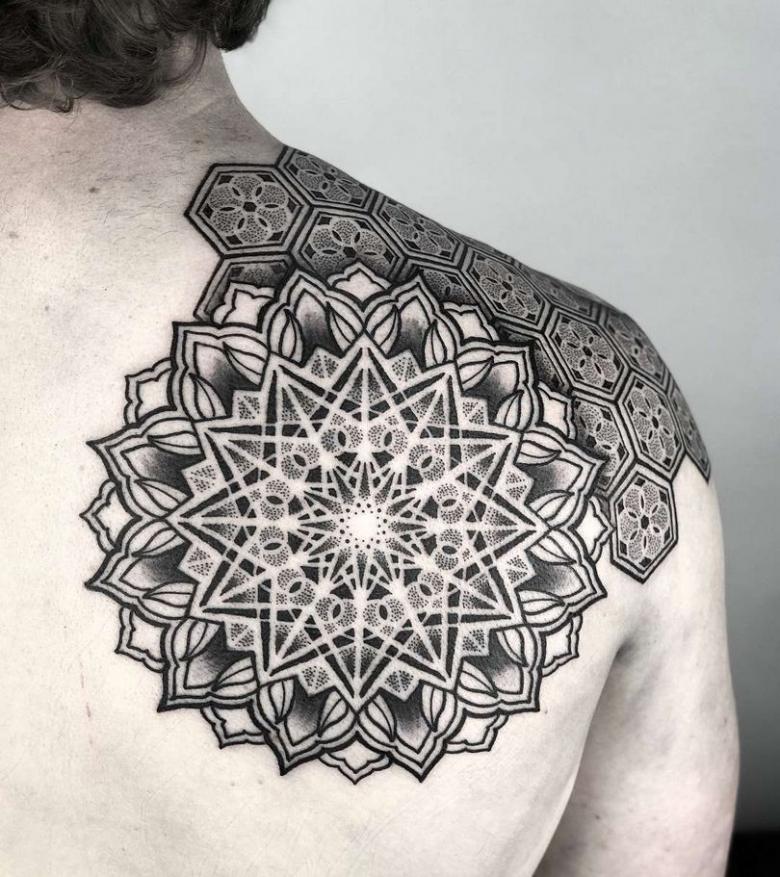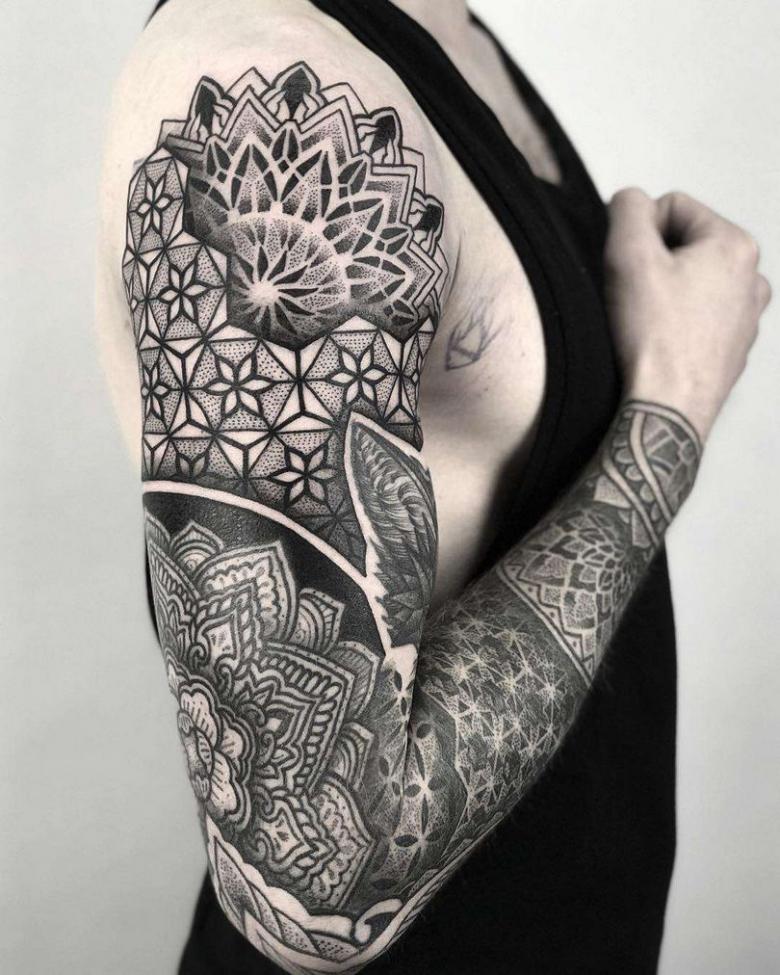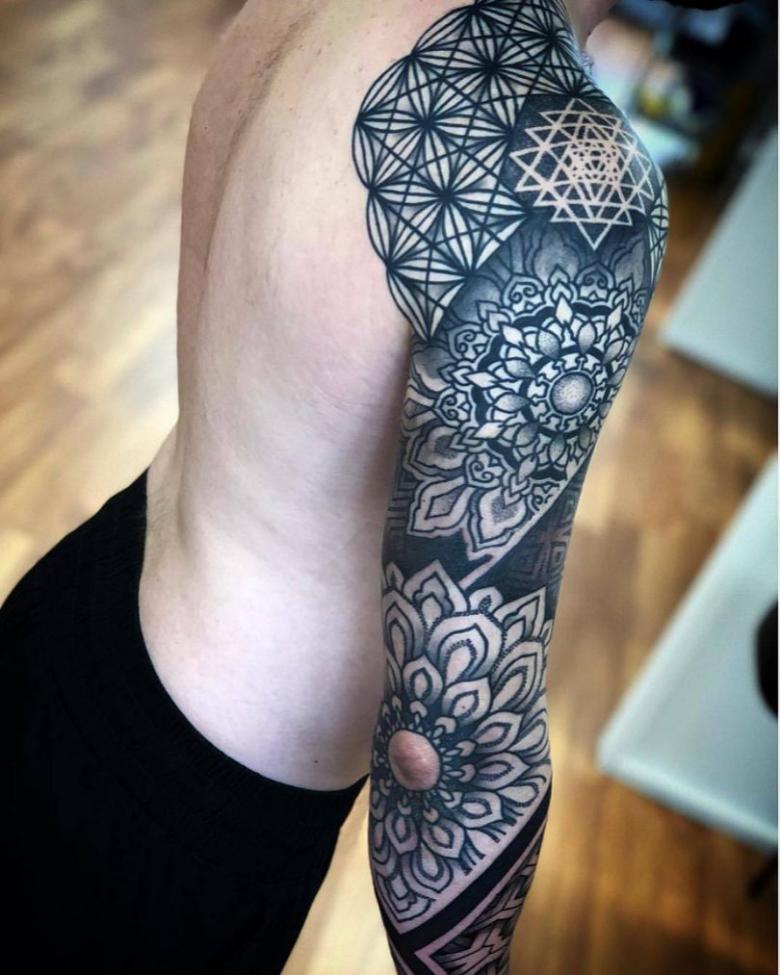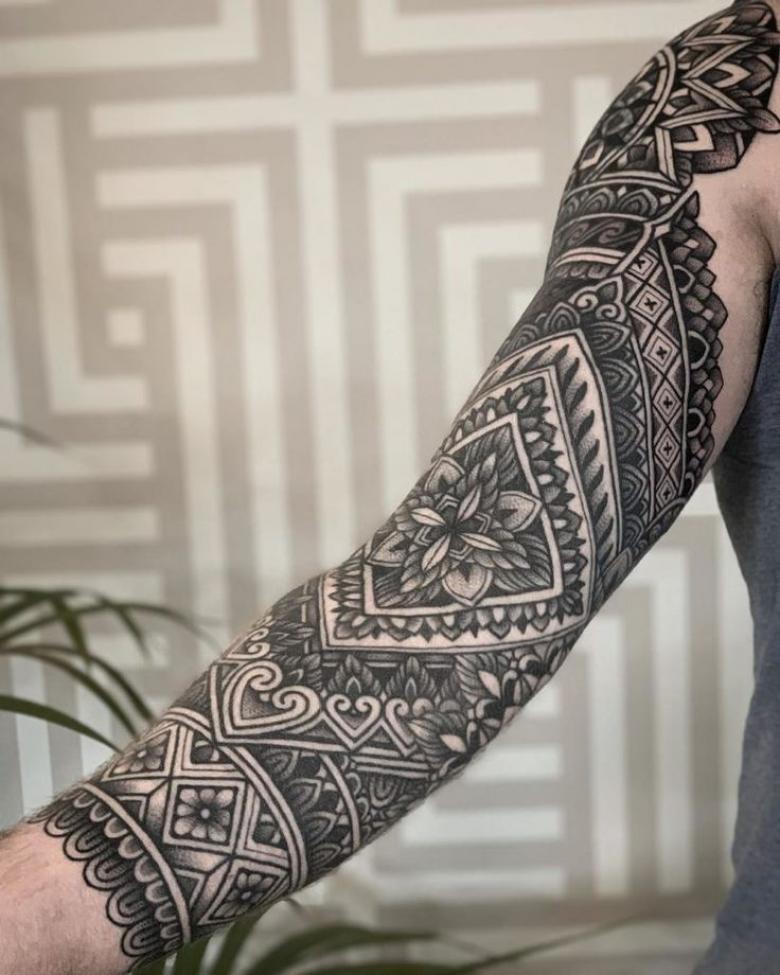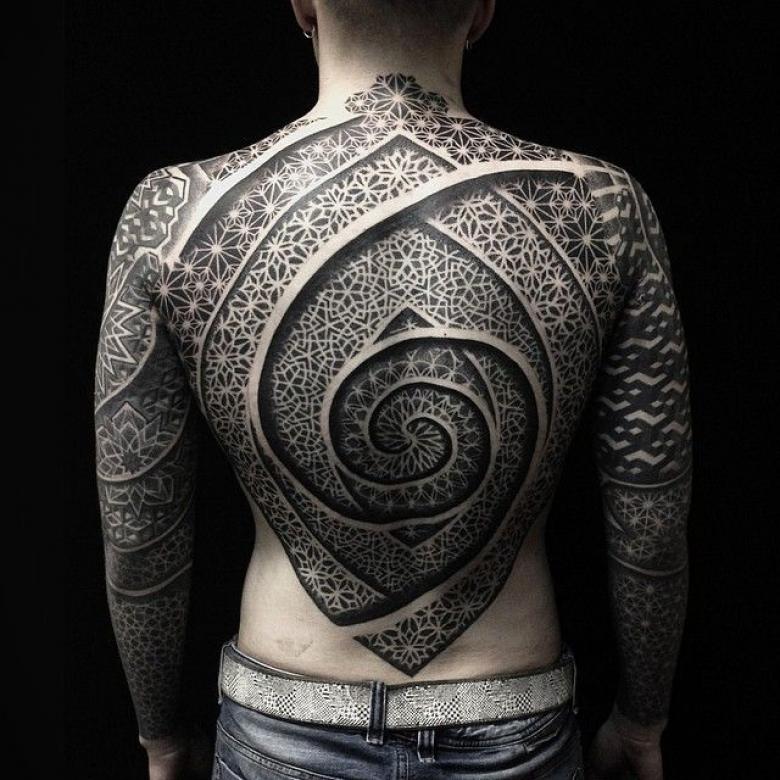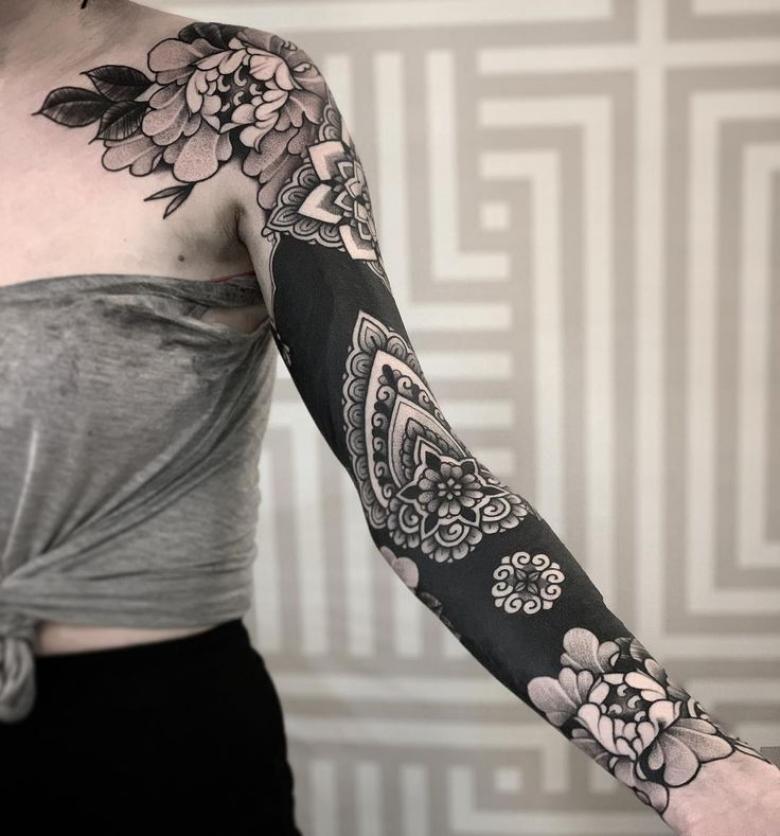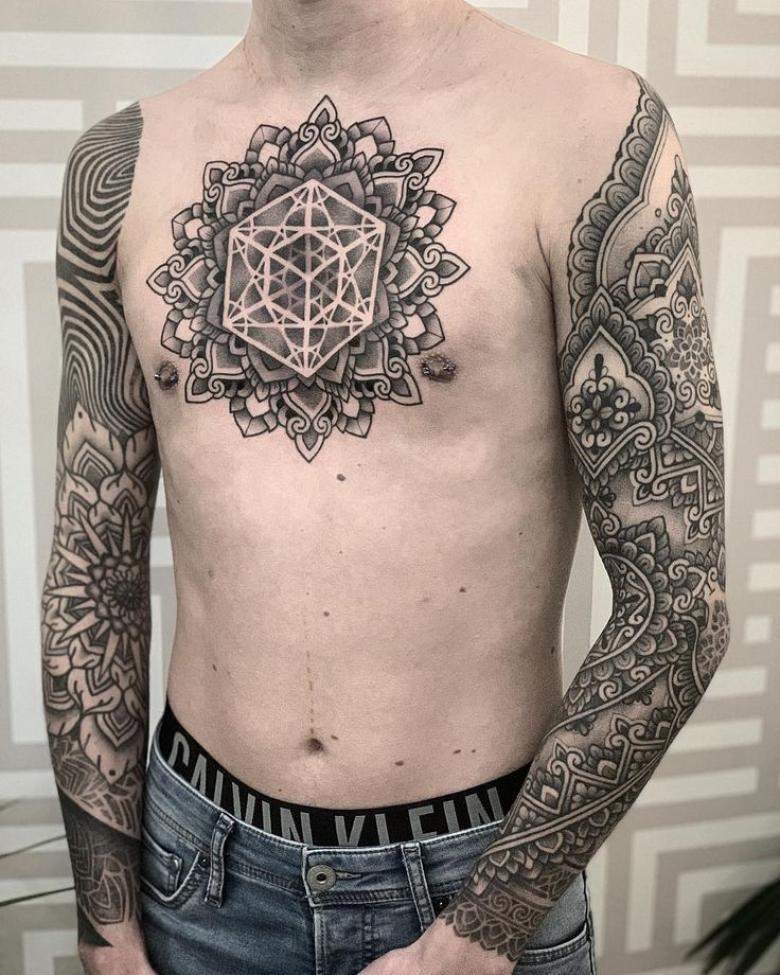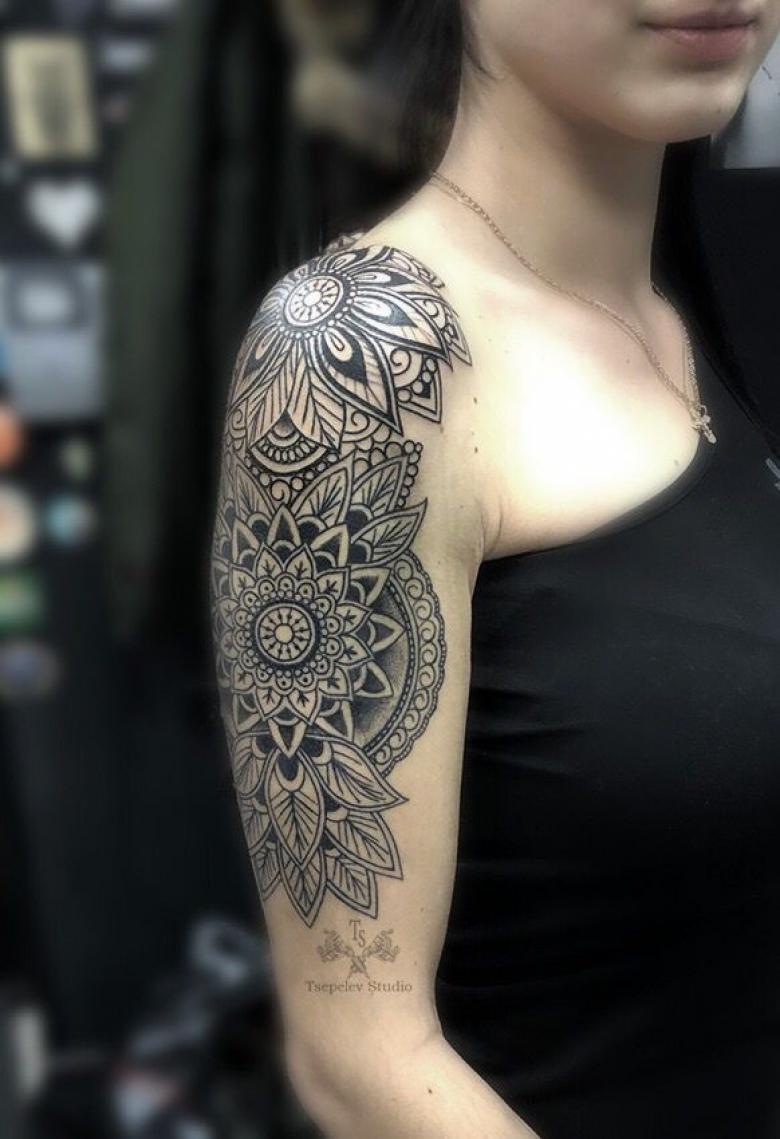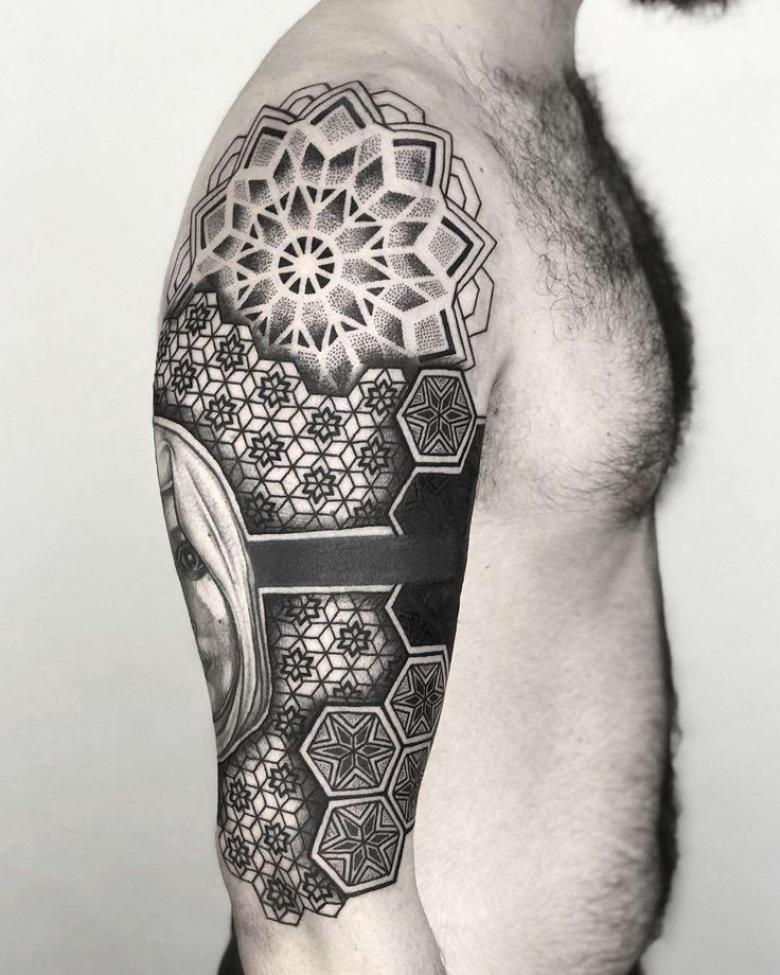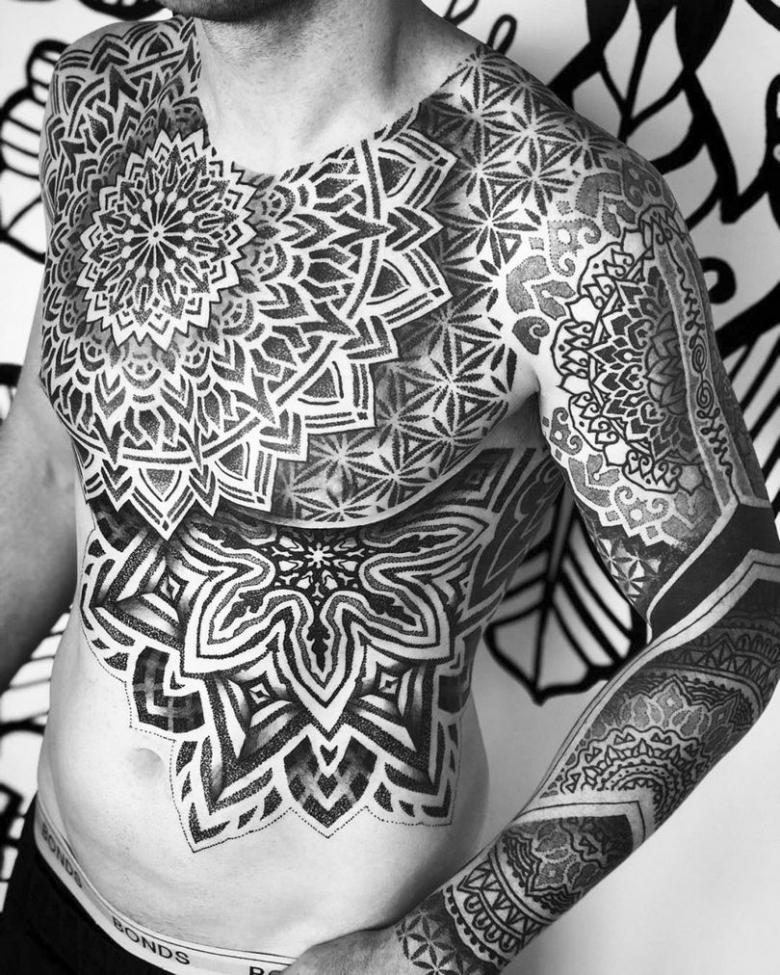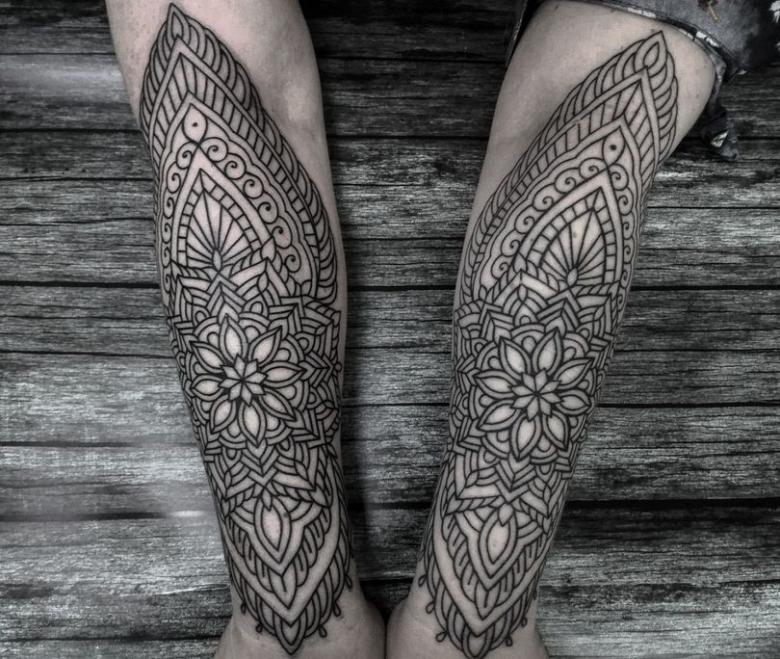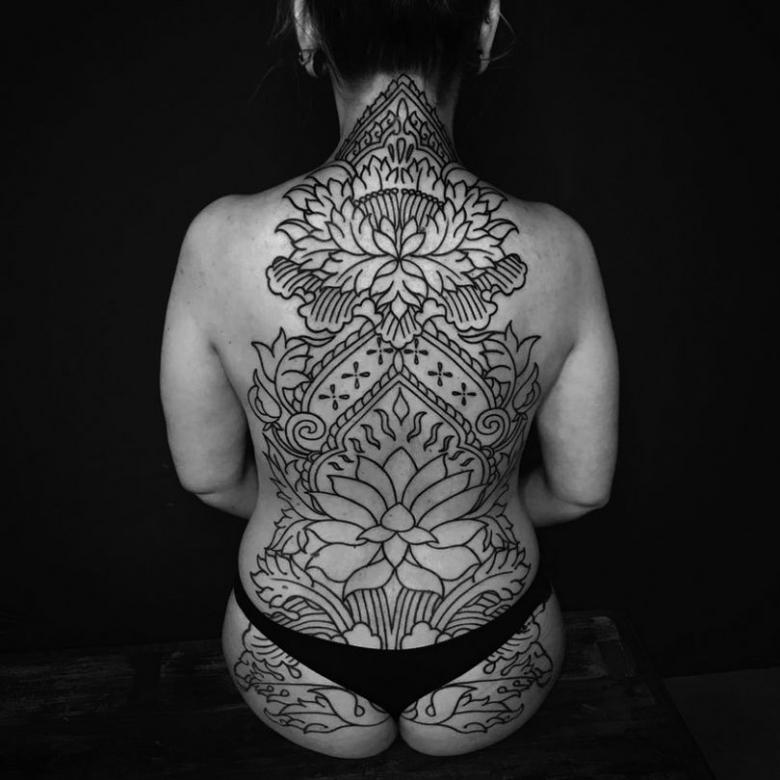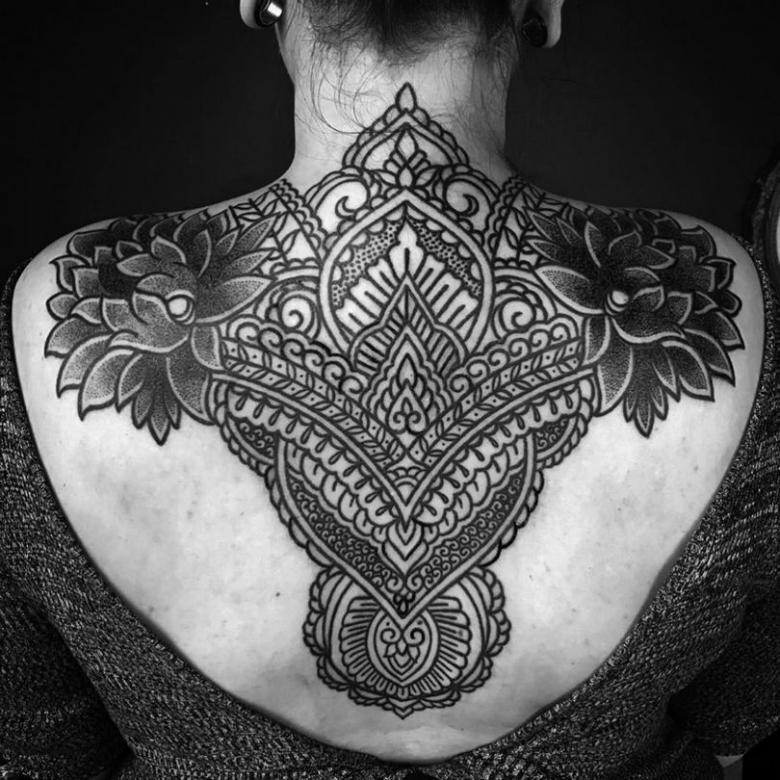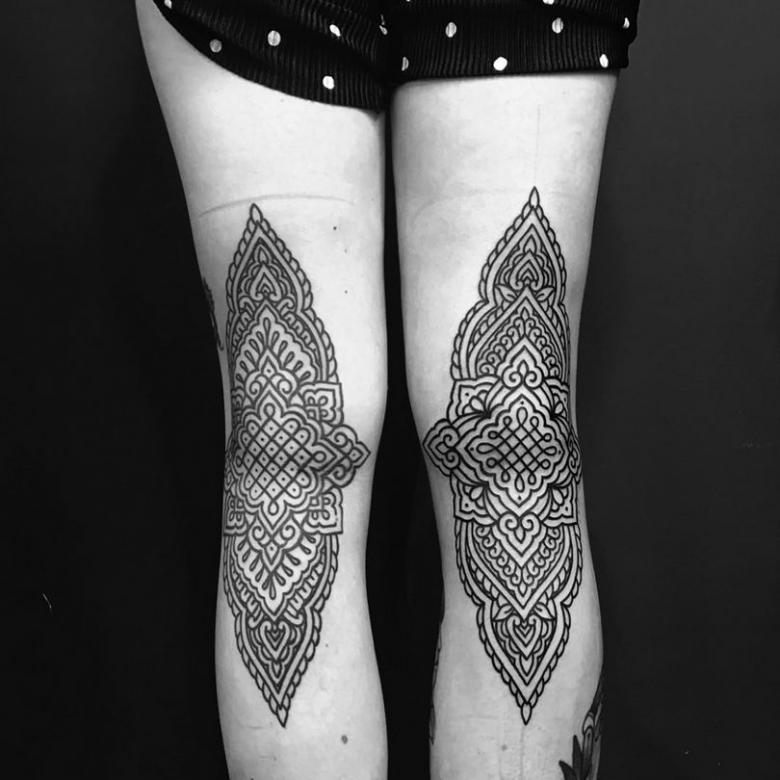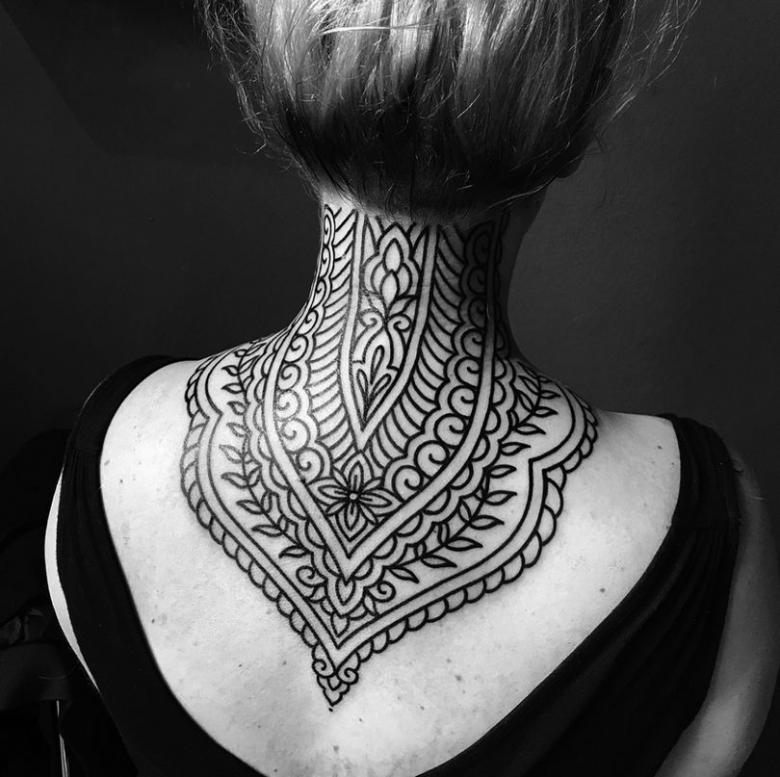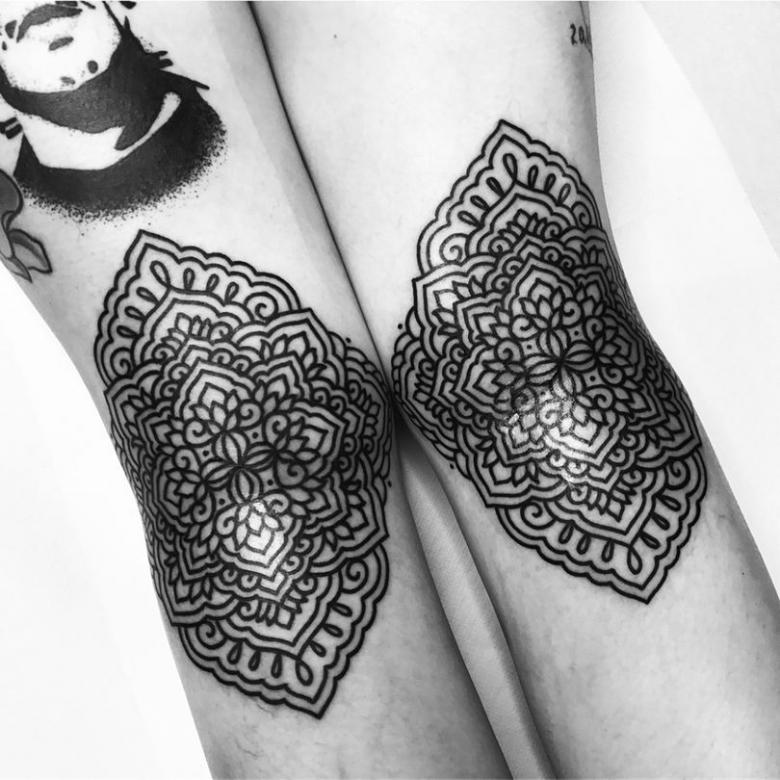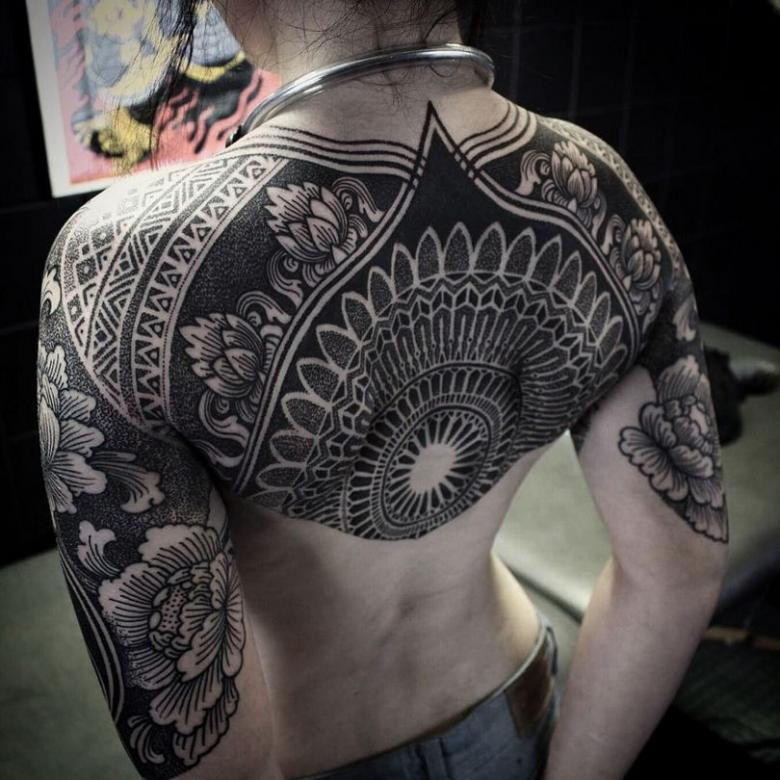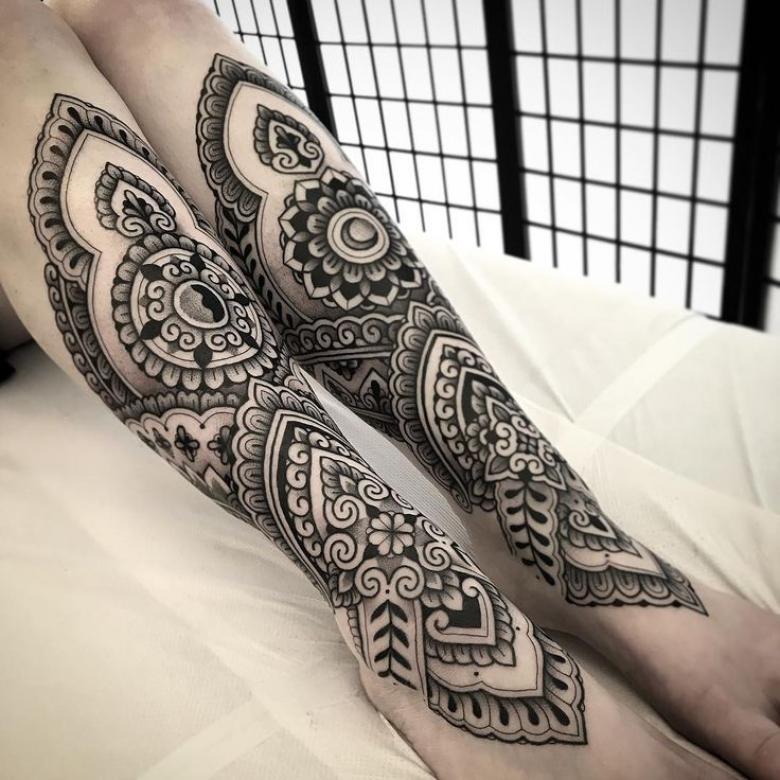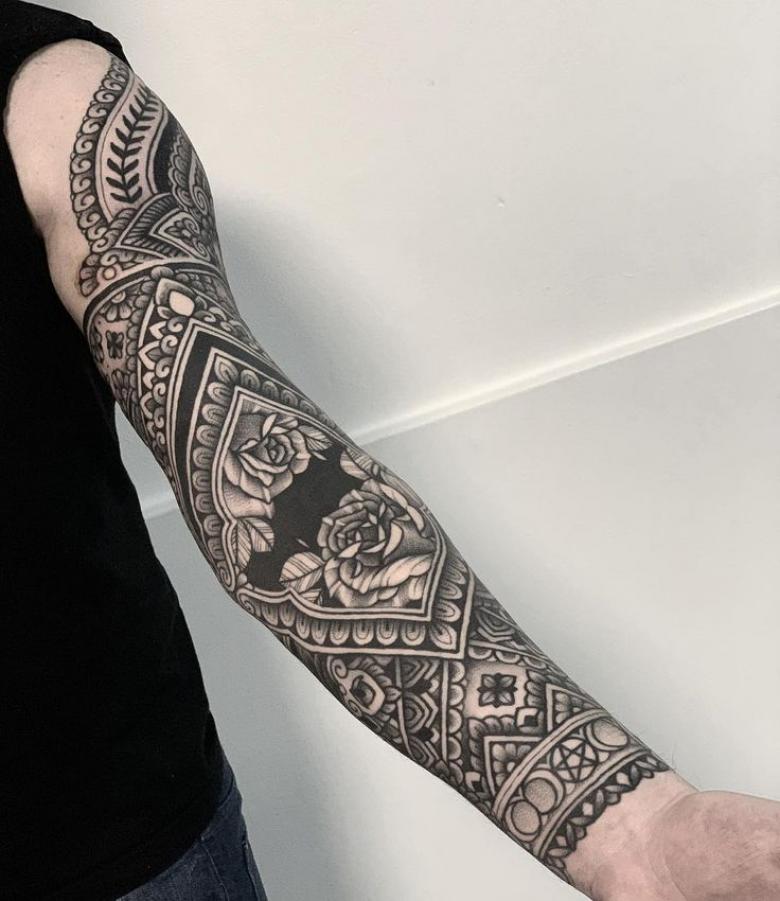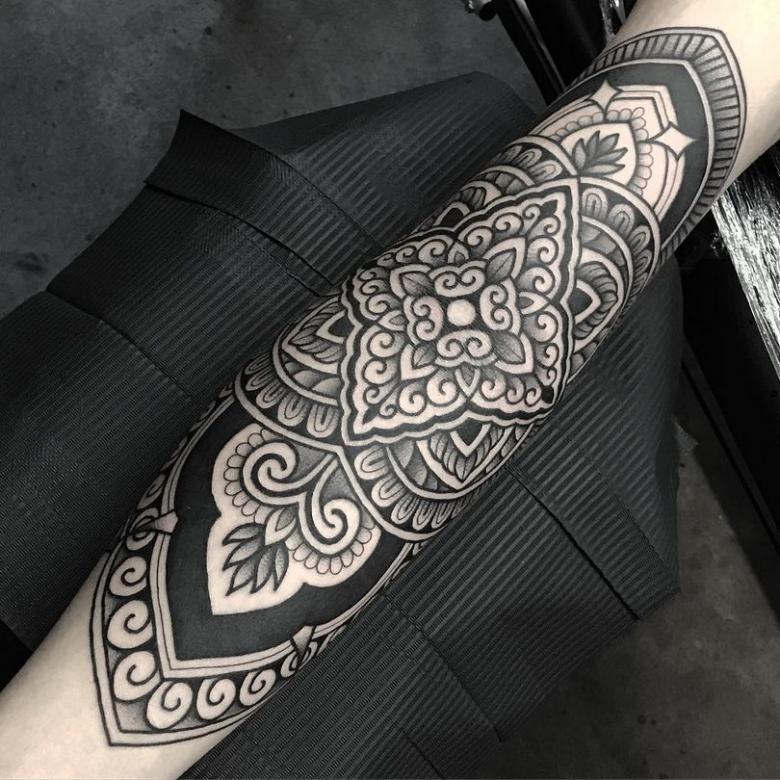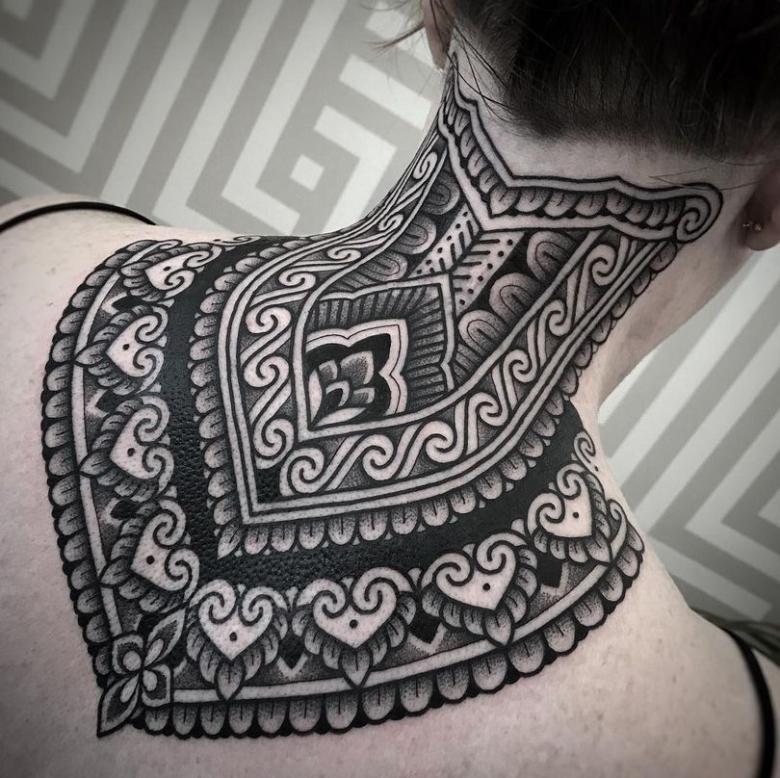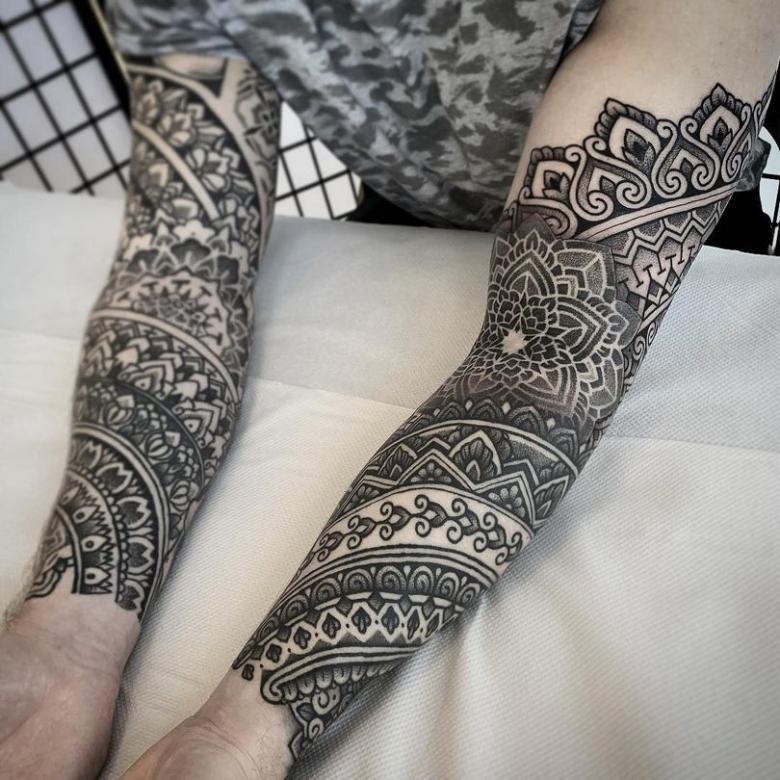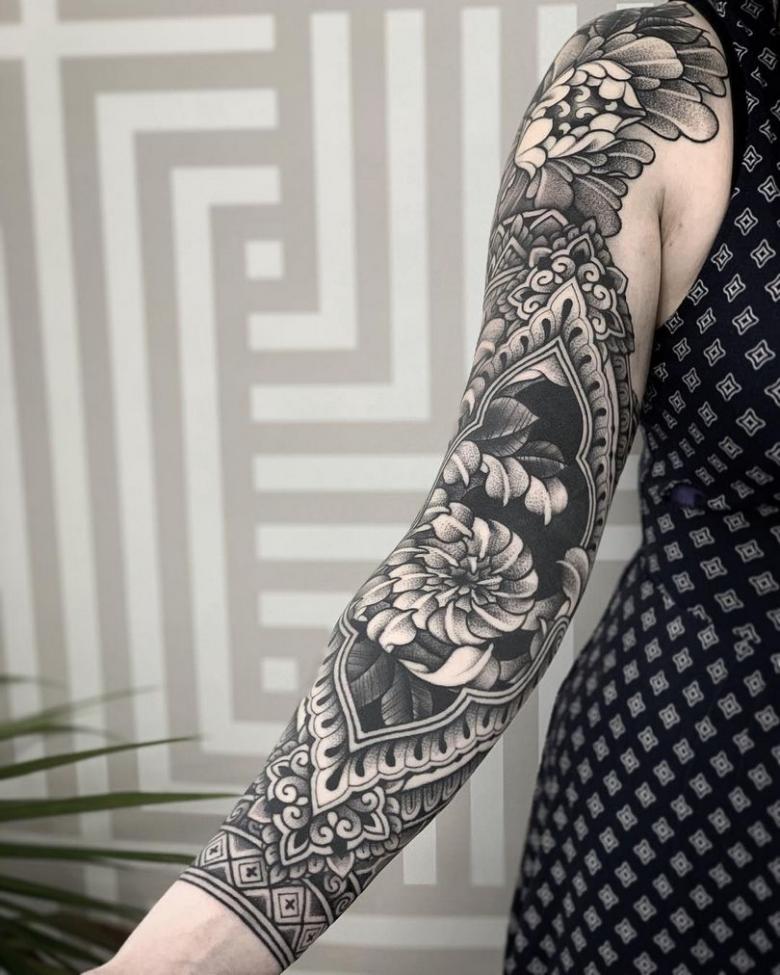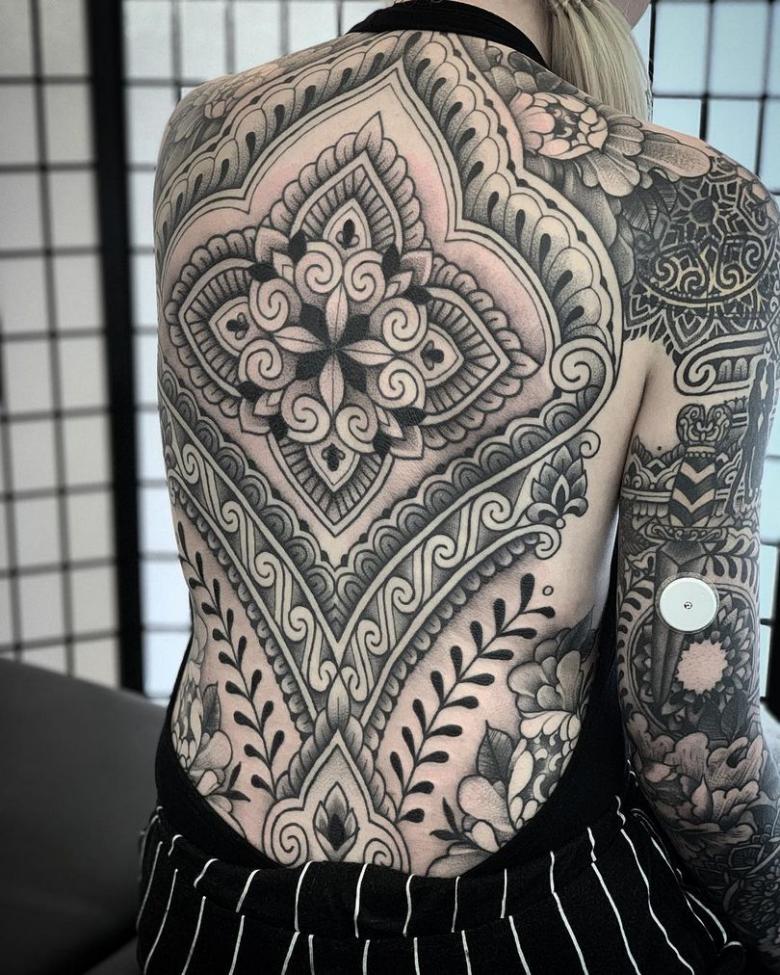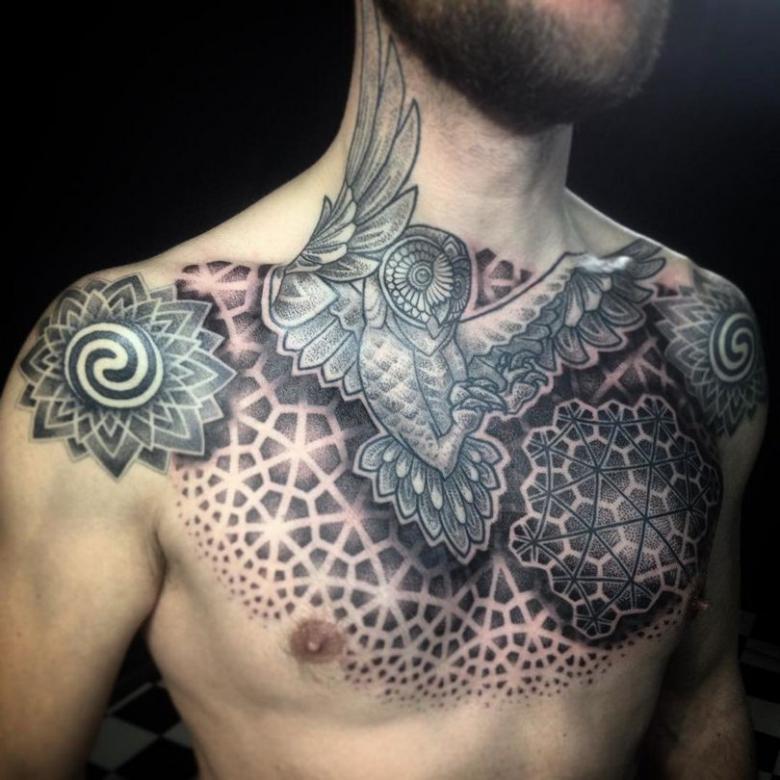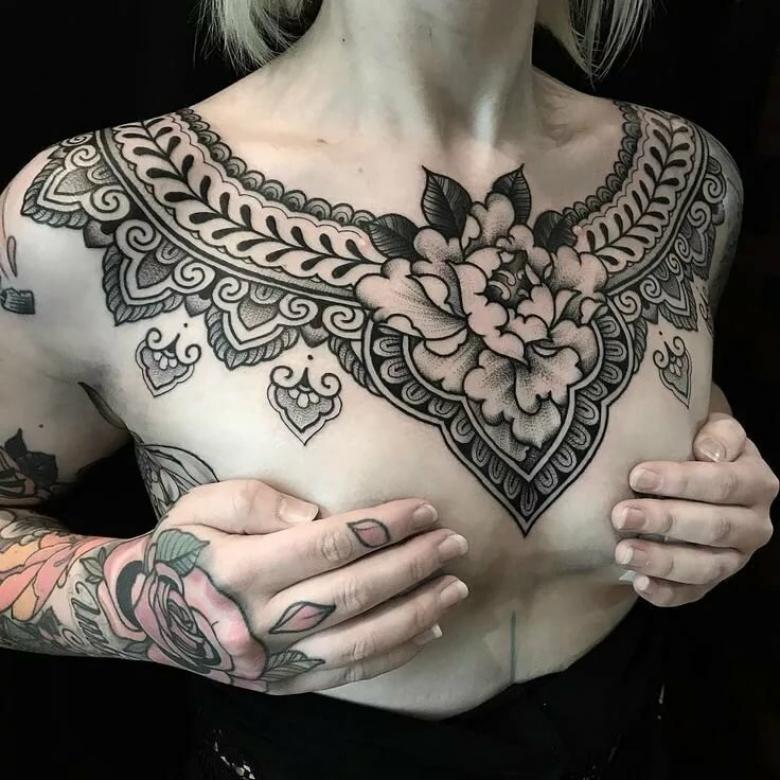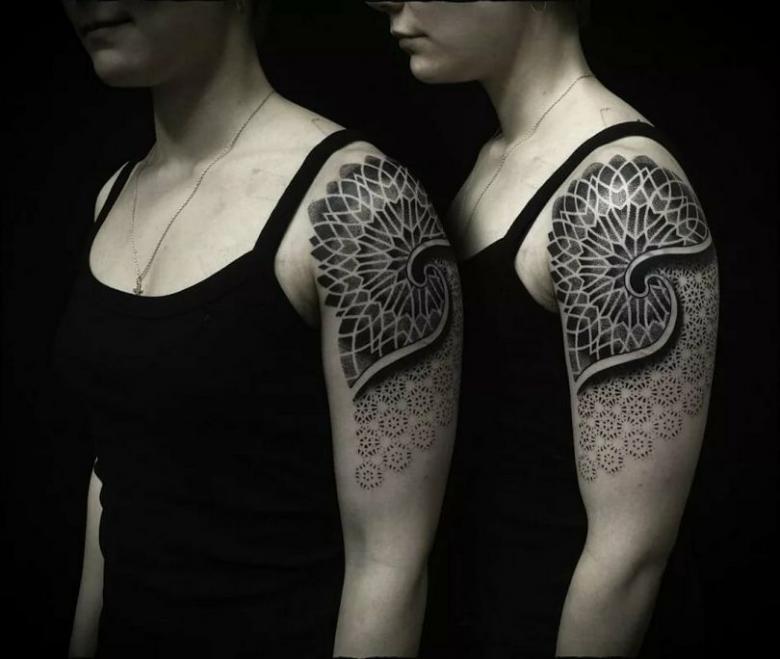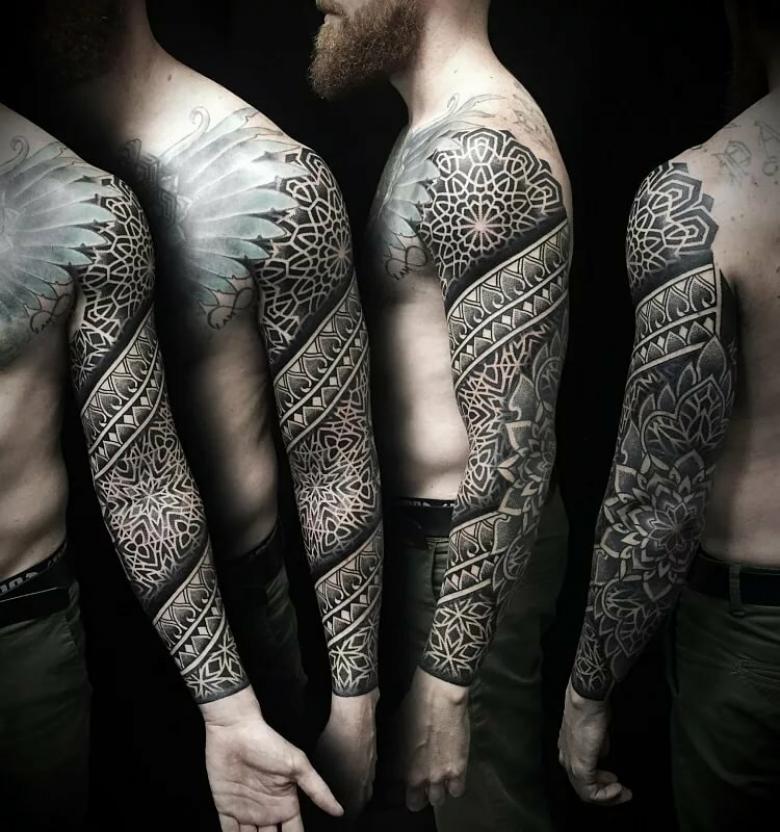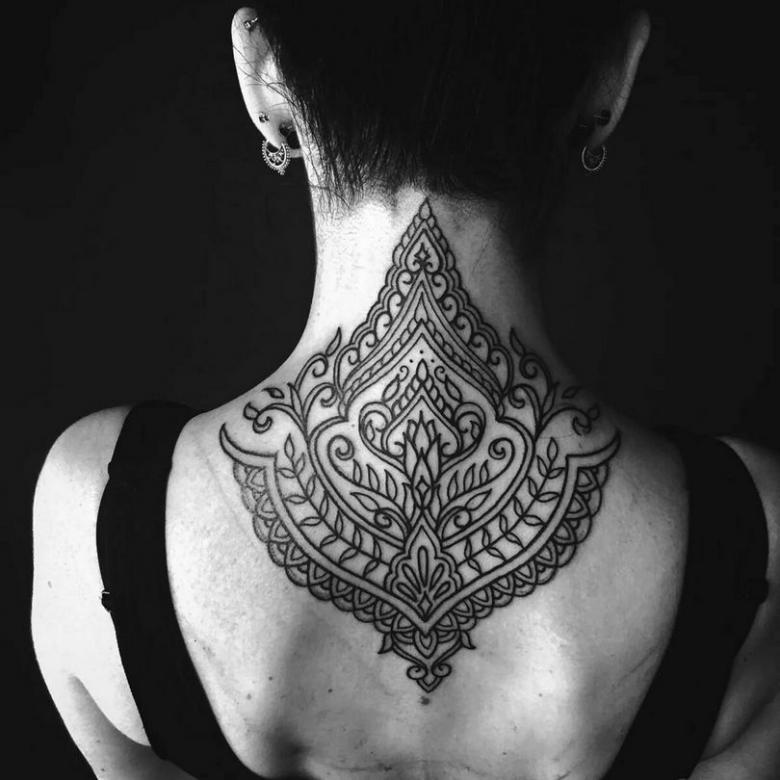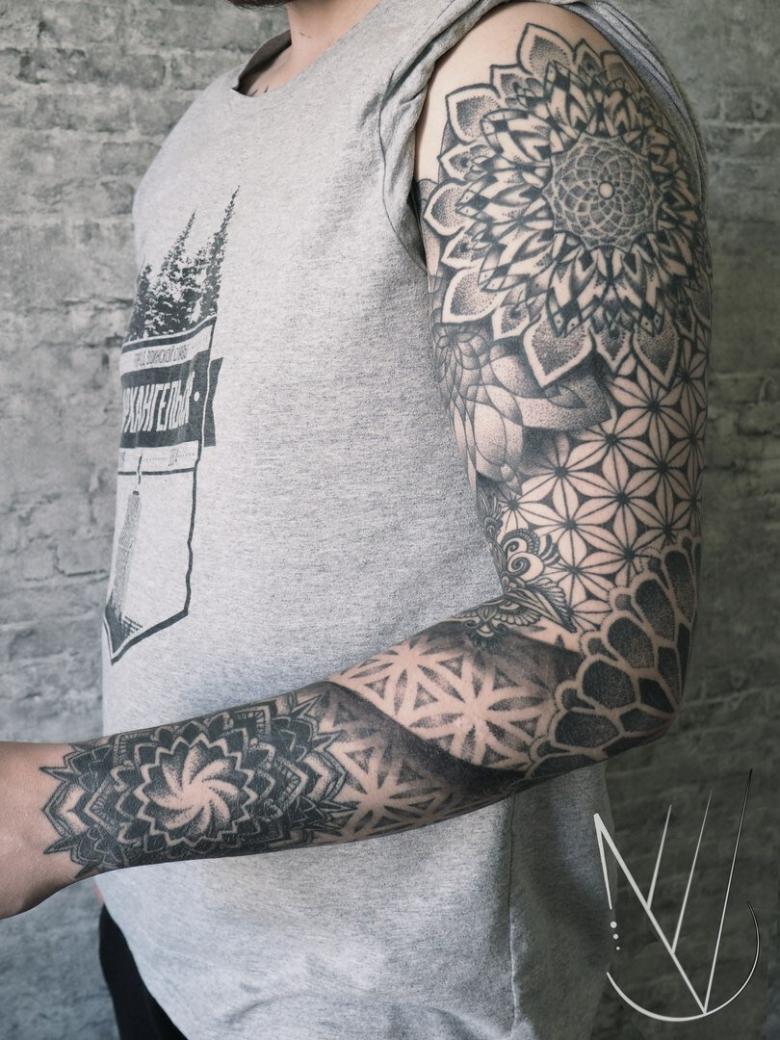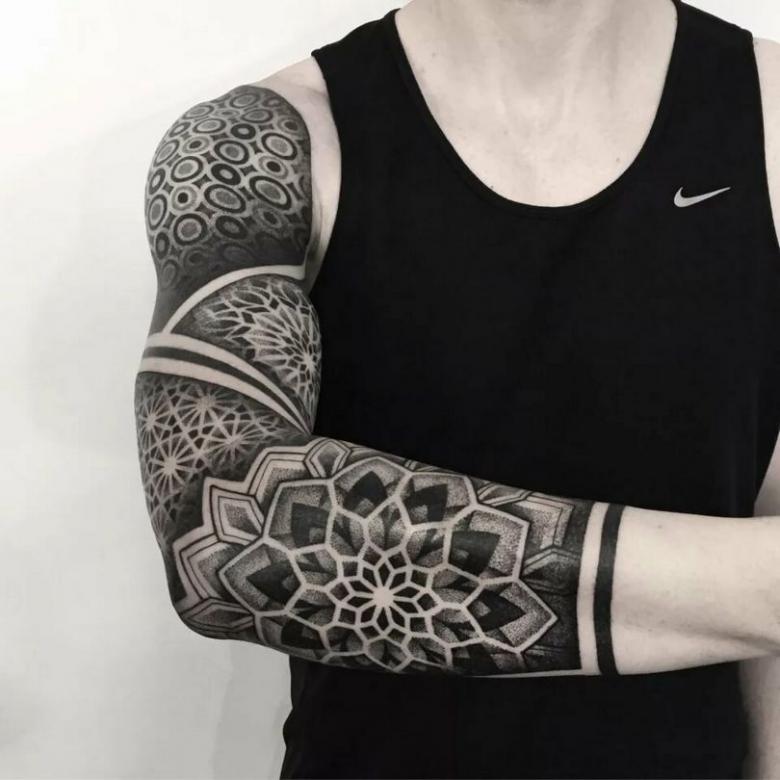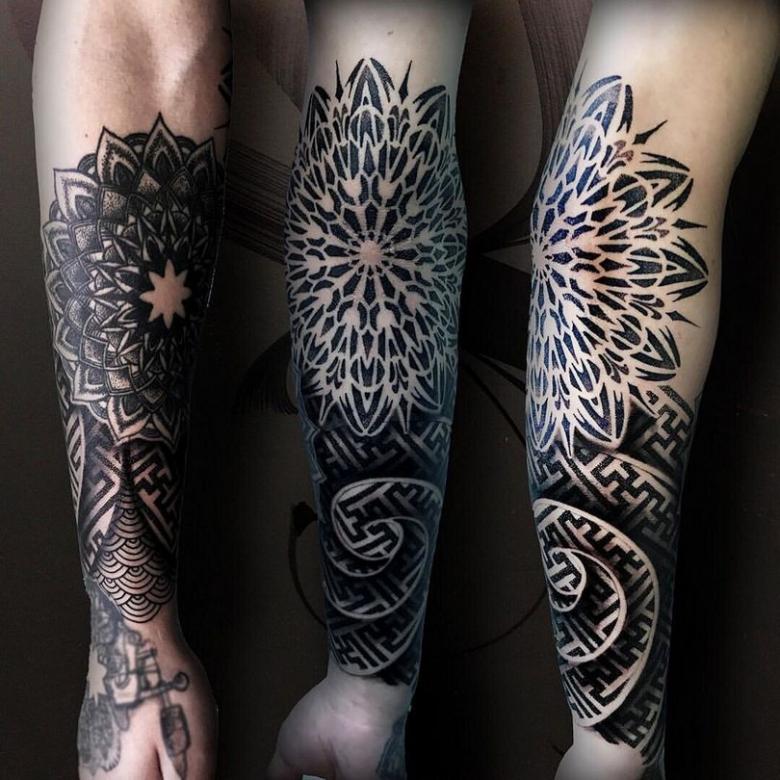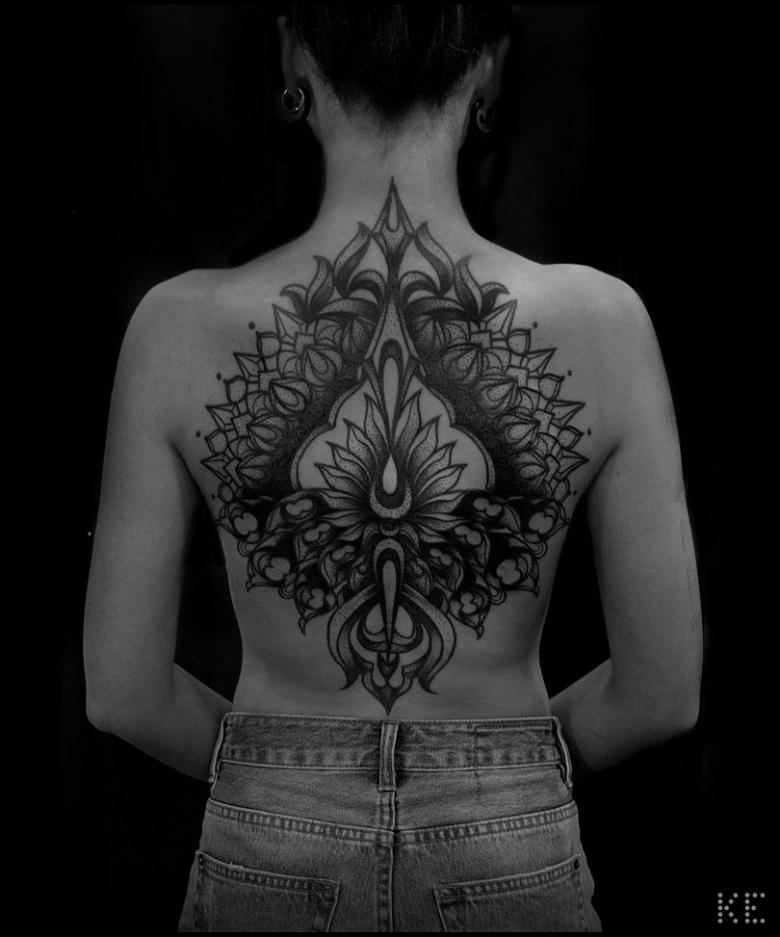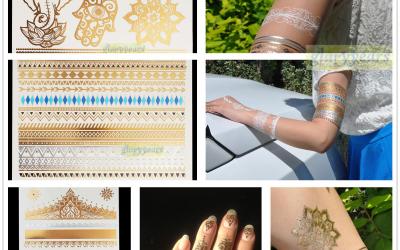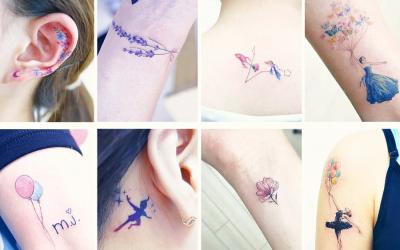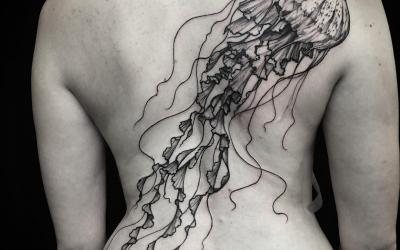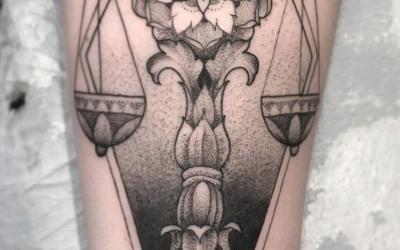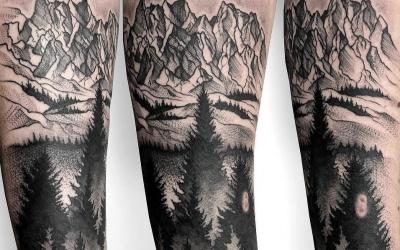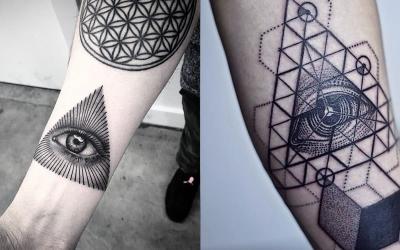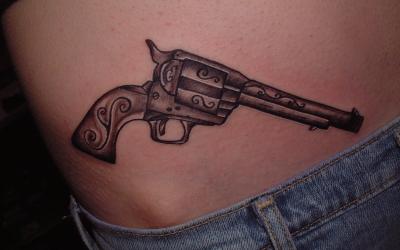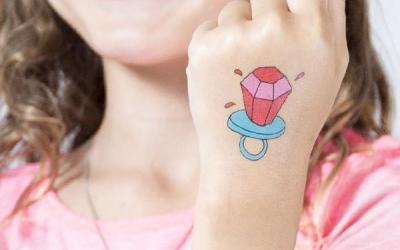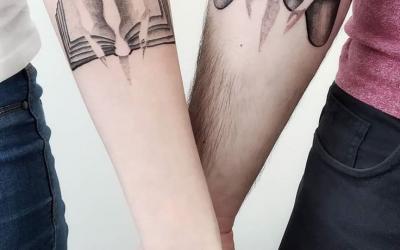Tattoo in the style of ornamental - meanings, spectacular designs for men and girls, photos and videos
Ornamental is a body drawing, reminiscent of woodcarving. The sketch consists of a variety of geometric shapes, dots or lines. The essence of this style is that the person who wants to score ornamental tattoo puts its own, sacred, understandable only to one, meaning.

Very often people get tattoos not to show what they are. They wish to show what they wish to become. The ornamental style tattoo is perfect for such purposes, allowing you to put the necessary meaning into the tattoo, defining the vector of your life path. Thus, the tattoo can be considered a kind of amulet, the loss of which will not have to worry.
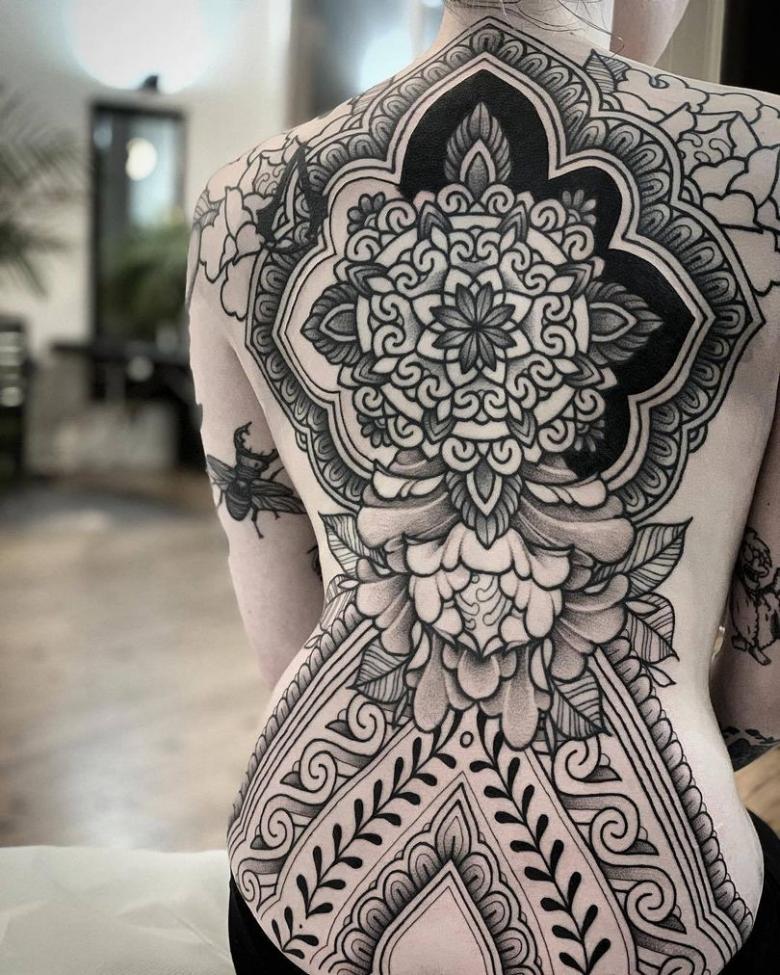
As a rule, the ornamental has many elements, these can be knots, geometric plants, spirals and waves in the mehendi style. The latter symbolize the eternal movement of matter, the cycle of life and death, rebirth.

Ornamental style tattoos originate from "tribal" tattoos of Polynesian origin.
Polynesian tattoos
Polynesia is a group of islands in the central and southern Pacific. The ancestral tribes of these islands used body art as ritual and informational components of their society.

Polynesian tattoos could tell about a person's rank in the hierarchy, his occupation and genealogy. The higher the social status of a Polynesian, the more tattoos he could get.

The first tattoo a Polynesian received as a teenager. This tradition existed to signify adulthood. The child was leaving the carefree world of childhood and entering the large and painful universe of adults. After all, tattoos were applied using sea urchin needles, plant thorns or shark teeth, and the paint was injected by hand in the absence of such professional equipment as we have today.
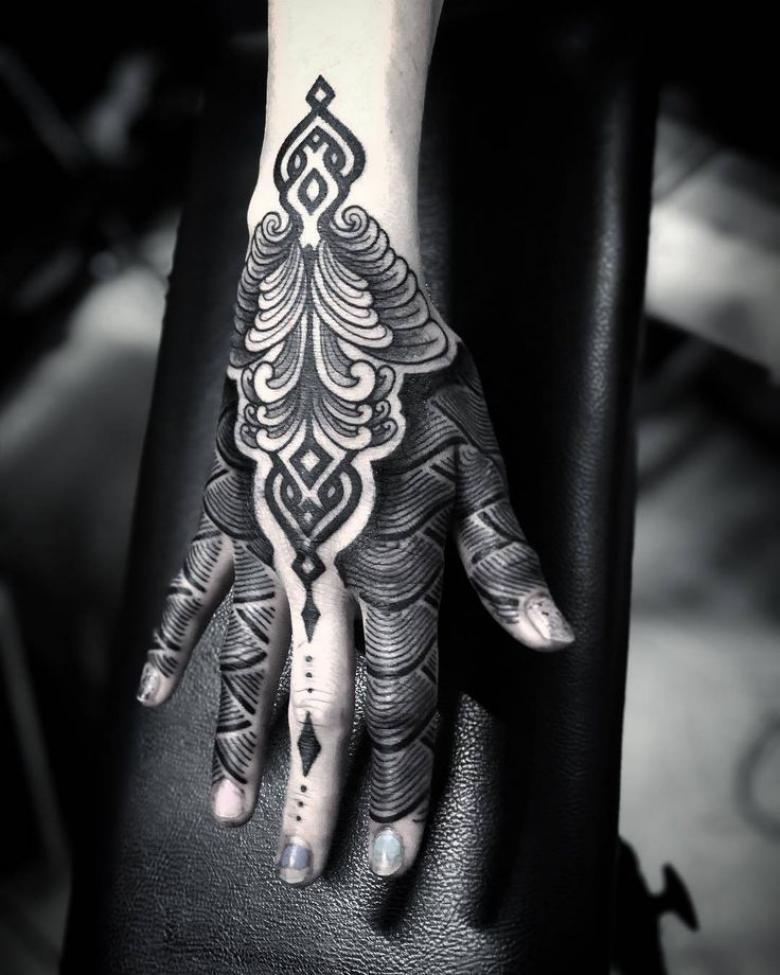
In a long and elaborate ritual, the priests painted, usually on the chest, tongue, and wrists. The session lasted from morning or afternoon until sundown, or until the man gave up and rescheduled the ritual for another day. This could last up to several months.
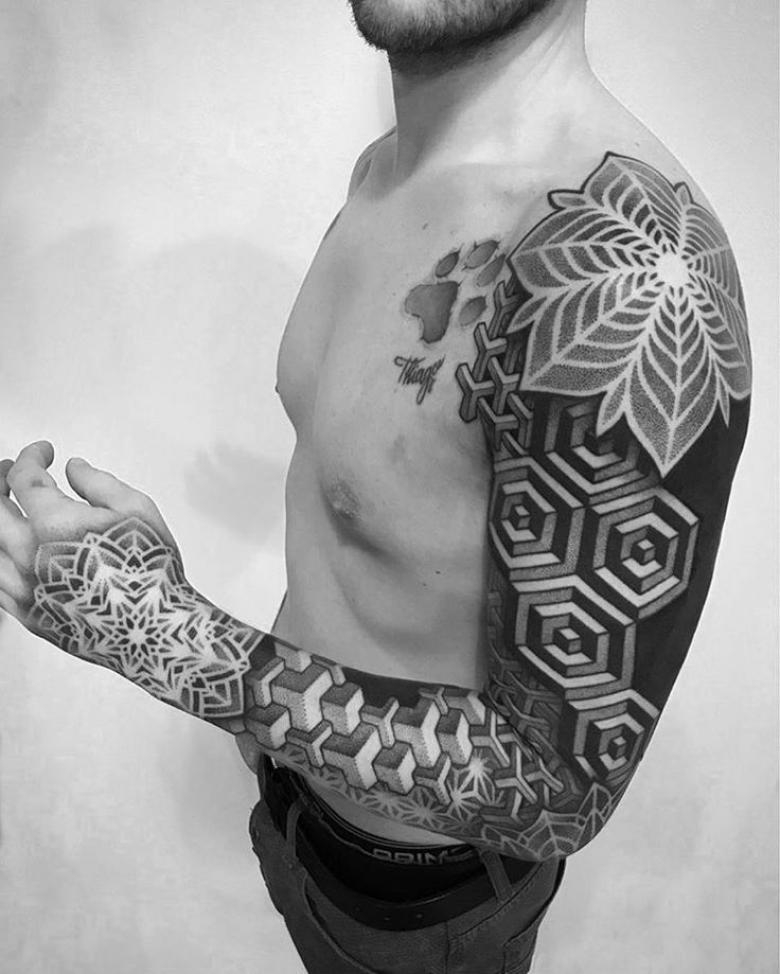
The pain during tattooing was on the brink of unbearable, and the risk of death from sepsis was great. Some men could not endure the torment. The tribe called such islanders hermits and isolated them from their influence for the rest of their lives.
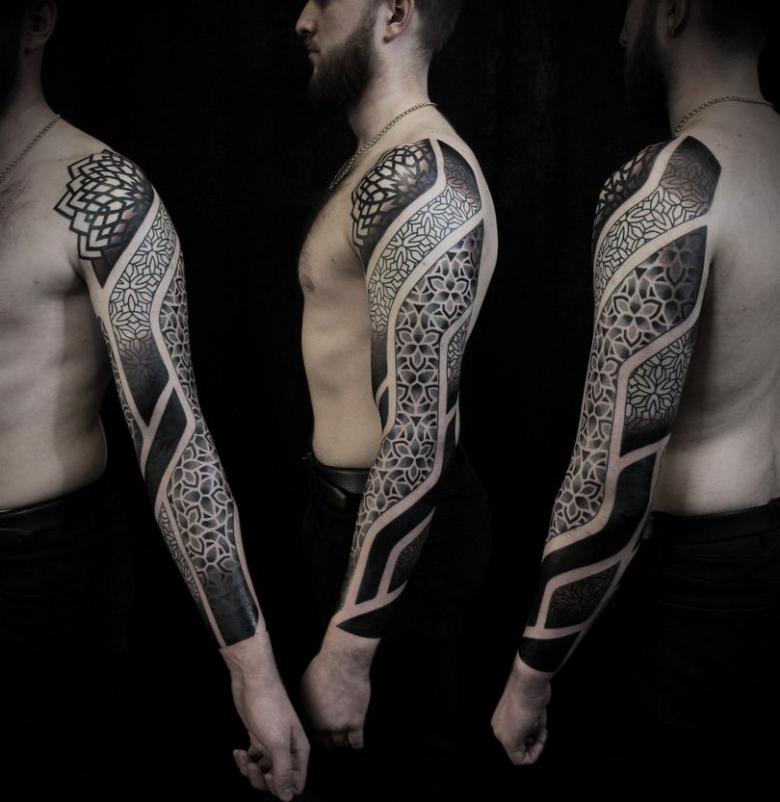
Healing a tattoo usually took many months, and it took a year to fully heal. The healing of a tattooed wound was a very painful process: often a person needed help in performing basic actions such as walking - otherwise the inflamed skin would become irritated and bring severe pain.
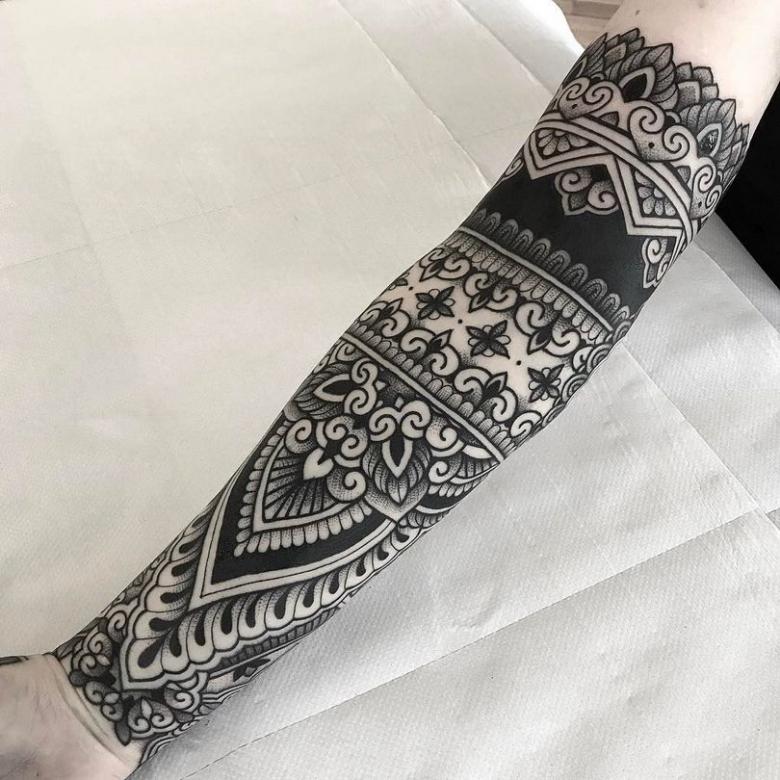
Yes, and in the present time it is necessary to go to the tattoo salon more than once to finish the whole ornament.
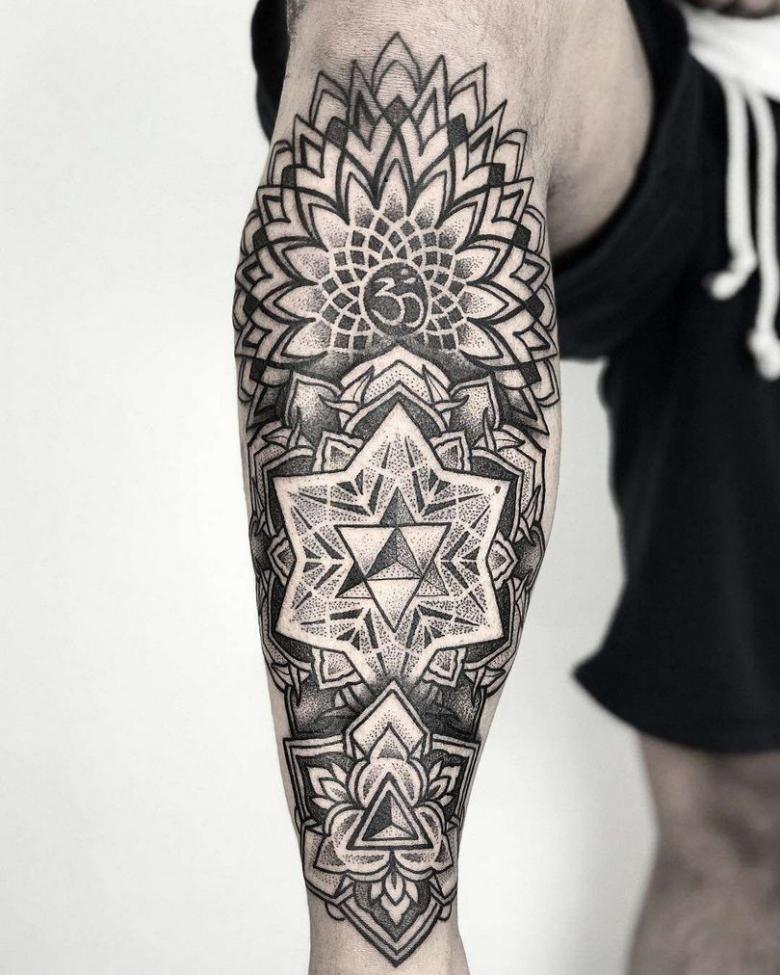
Priority in tattooing
Clear lines and symmetry of form are the main distinguishing features of the ornamental. Symbols are intertwined in flowing lines, creating a complex geometric pattern. Each vertical line must be drawn with a precise and verified movement of the master, as even a slight curvature of a line or an arc will be visible on the skin and will spoil the impression.

The ornamental style is not limited to lines only, on the contrary, it can be combined with other styles.
- Ornamental combines perfectly with BlackWork. Empty spaces in geometric shapes are painted over in black, creating a striking black-and-white pattern.
- LineWork consists only of lines, without transitions and halftones. Extremely difficult to implement.
- Combination Dotwork and ornamental looks like applying a tattoo with a huge number of dots, which can both have themselves in the projection of an ornamental pattern, and fill in geometric shapes, creating shadows and halftones.

Cultural Influence
Each nation has its own style of ornamentation, so modern traditional patterns from different countries can vary greatly in style and appearance.

For example, Celtic or Norwegian patterns are dominated by knots as a fundamental symbol. They are superstitious and endowed with magical meaning. Runes, amulets, staves, personifying higher forces and giving protection to their bearer are used.
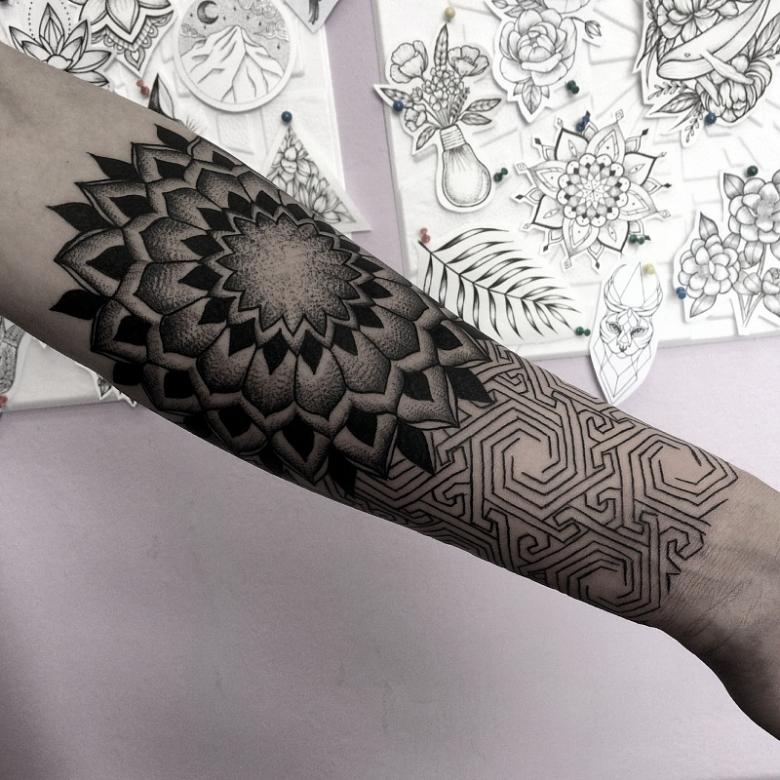
Slavs are characterized by crosses, swastikas, wreaths of plants or animals - they are predominantly protective in nature - with red, yellow or white dominating in the color palette of the sketch.
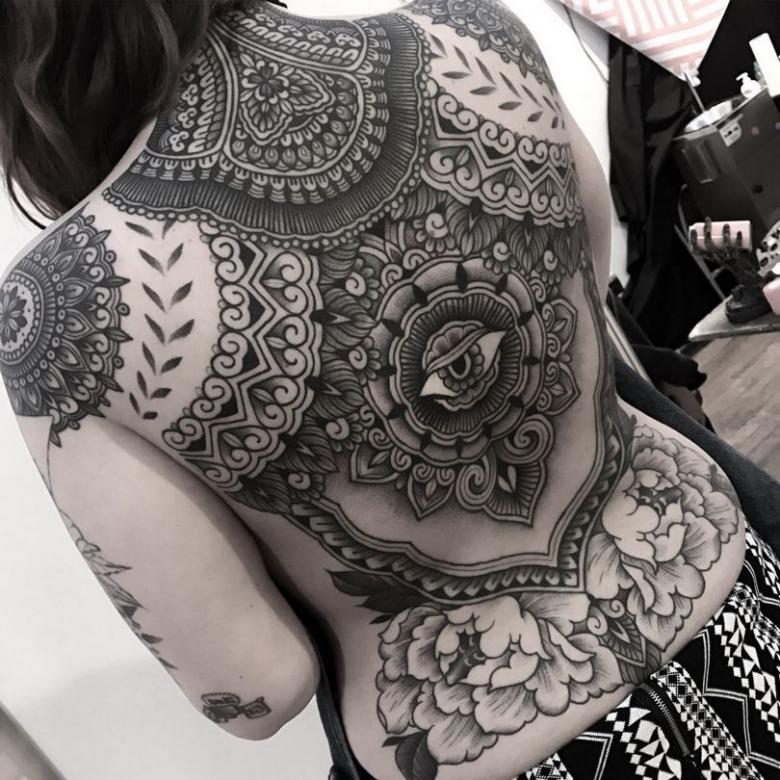
Lotus flowers, acacia, palm trees - Egyptians prefer to use solid elements, austere and restrained in appearance. Tattoos are made in natural tones, that is, in green, sandy, sky-blue colors.
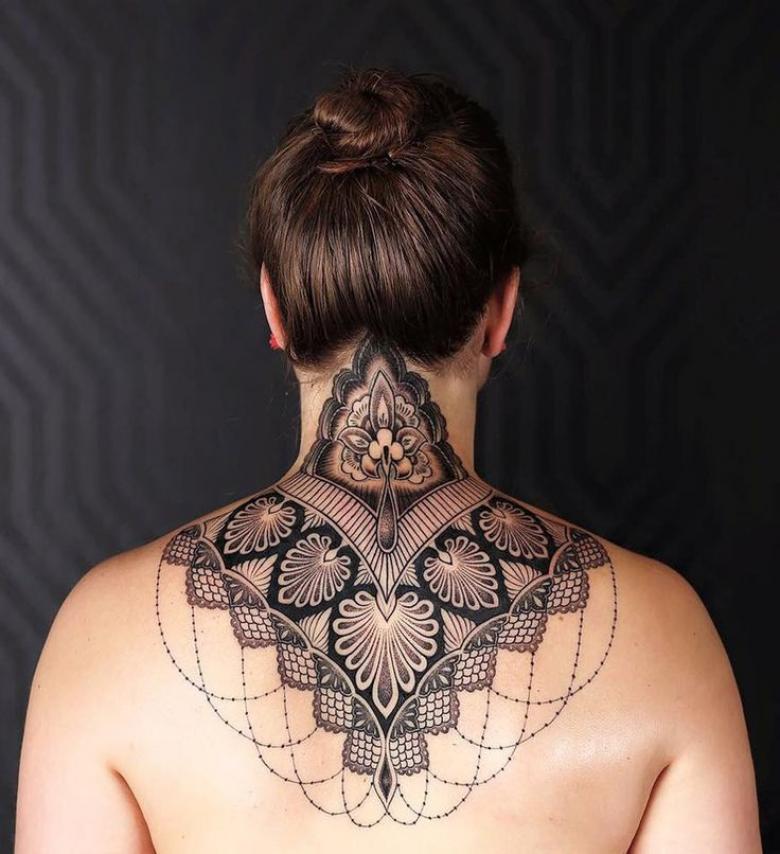
Actual ornaments
The Maori people (Polynesian islanders) back in 1771 showed Europe their unusual tradition of tattooing the body when Captain James Cook first decided to explore the Polynesian Triangle territory. The beautiful intricacies were a tempting decoration for the sailors of the time, and many returned from their voyages with a body image.
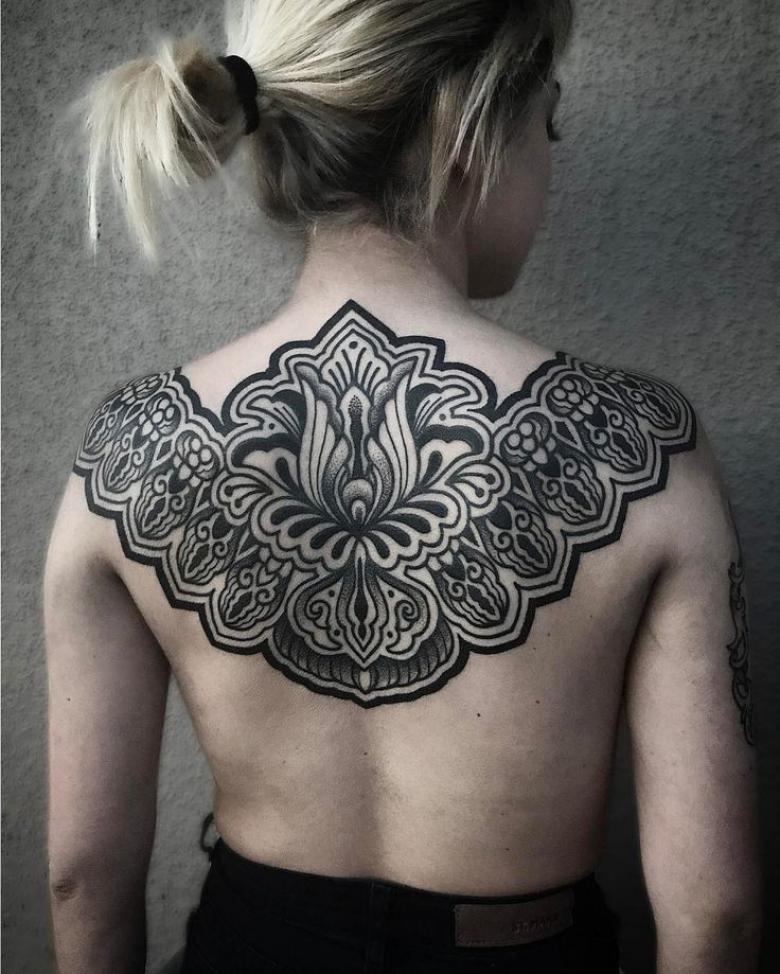
Although three hundred years have passed, totem animals and tribal deities are still popular in the tattoo world. But they share first place with images of Native American mythological creatures and gods.
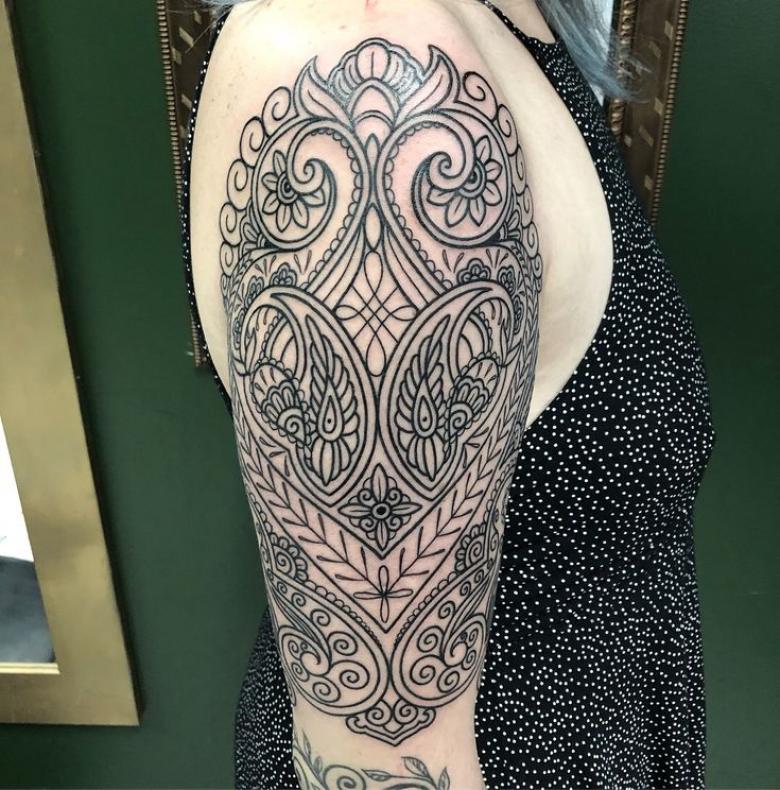
In Russia, the so-called Russian ornament is popular. The image is made in considerations of Slavic motifs in the form of Khokhloma or Gzhel. The choice of such a tattoo indicates a strong patriotism and a deep love for the homeland.

Places of application
Very often you can meet people applying ornamental tattoos to the hands, forearms. Women prefer to prick various patterns on the ribs, collarbones, and men - on the back, chest.

